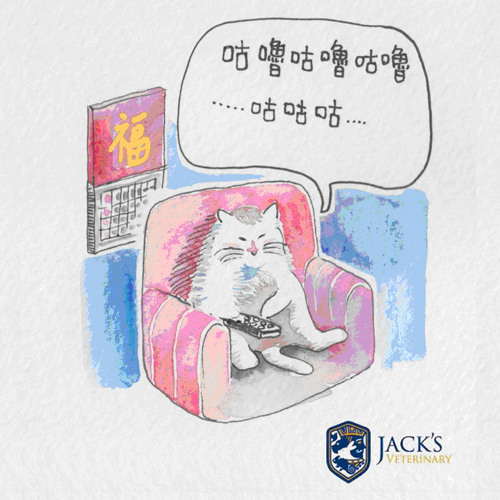Bloggers

Such an adorable fatty! Every day your cat stays home and enjoys delicious food or falls asleep on its cushioned bed. What a wonderful life you have given to your cat and you are probably really proud of your sweetheart. In fact, you don’t need to pay much care to your cat, as it is able to take care of itself.
Be cautious of this kind of life style! It is time to think if diabetes, which is incurable and irreversible, has been forming in your cat. Here is more information about diabetes in cats. If you own a cat, especially a fat cat, please read the information below carefully before it is too late to regret.
What is Diabetes Mellitus?
Diabetes Mellitus (DM) is a common disease in cats. About 80-85% of DM is noninsulin-dependent diabetes mellitus (NIDDM) which is also called type-2 diabetes mellitus (Type-2 DM). Type-2 DM indicates the situation that cells of such as muscle and liver are unable to absorb blood glucose due to their resistance to the action of insulin; as a result, blood glucose remains in blood stream and the cells are left to starve. When liver cells are starved, they will call the fat cells (adipocytes) to release triglycerides into the blood stream. When triglycerides arrive at the liver, they will be broken down into acetoacetate and to be released into the blood stream where it can be picked up and readily used by other cells and tissues. However, by-product called ketone is also produced during the process. When ketone level is high in blood, it causes acidic blood, electrolyte imbalance and contributes diuresis, which in turn results in hypoperfusion and dehydration. It would also further raise the blood glucose and do the plasma osmolality. Cellular dehydration and thus tissue hypoperfusion would be aggravated. Cats would eventually die from hypoperfusion and dehydration. This is the reason of necessary treatment of DM.
Cause of Type-2 DM
There are many causes of DM and it is usually multifactorial in cats. One of the main causes is obesity. An overloaded fatty acid desensitizes the insulin receptors on cell surfaces. The affected cells thus do not open up the channels for picking up blood glucose. Other reasons such as infection and endocrine diseases are also common.
Cats with DM have quite dramatic symptoms. First, this disease is usually found on a very fat cat with sudden weight loss. They usually tend to eat a lot but they suddenly suffer from a reduction in appetite. Then, they show frequent urination with excessive drinking of water. When the situation is severe, you may see that they walk with toes and hocks flat on the ground. In order to confirm the diagnosis of DM, a blood test and urinalysis is needed to check the presence of glycemia and glucosuria along with the possible symptoms of DM (Polyphagia, Polydipsia, Polyuria and Weight loss etc.).
Treatment of Type-2 DM
Treatment of DM requires hospitalization for several days to rehydrate the cat with intravenous dripping and to find out the correct dosage of insulin for individual cats. Blood glucose curve is a test to adjust the dosage of insulin for cats with DM. Once the correct dosage of insulin is obtained, the veterinarian will usually send the patient home, and let the owner do insulin injections for the cat. Owners need to monitor the patient closely to avoid hypoglycemia which is life threatening. Some veterinarians may show the owner how to use the blood glucose meter at home.
Treatment of DM is a lifelong management instead of giving insulin medication only. Cats with DM require a high fiber diet or prescription diet, on-time insulin injections, some degree of exercise and regular blood test in order to control the DM well. Luckily, in most cases of type-2 DM in cats, it is possible to bring remission if the treatment is managed well. It usually happens within 10 weeks of treatment with absence of complication or any underlying factors of DM.
The first rule to prevent DM in cats is to avoid over-weighting. Cats usually love exercise when young but become very lazy of exercise when they get mature. Try to provide more entertainment at home and control the amount of food given to them before it soon becomes a couch potato. Just move their bums!
